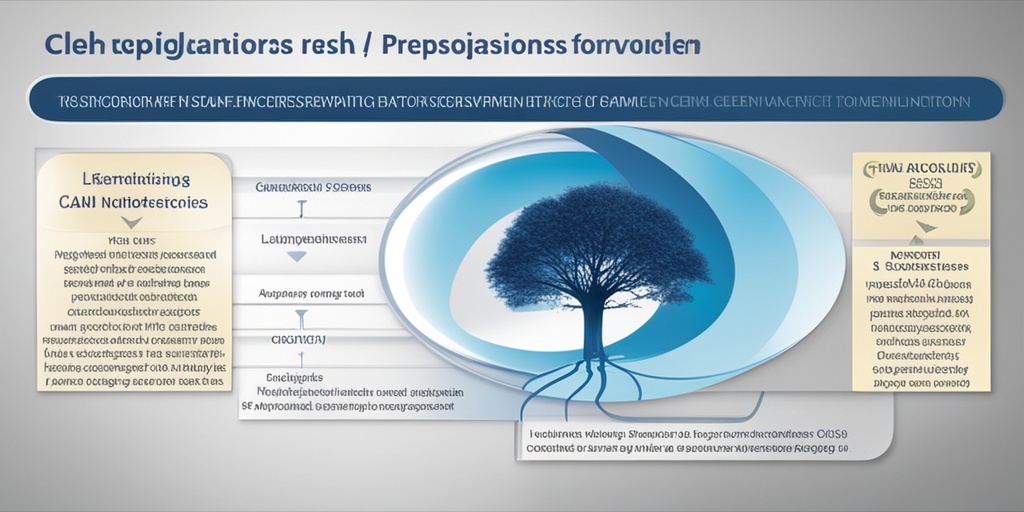“`html
What Is Sphingolipidosis 1?
Sphingolipidosis 1, also known as Gaucher disease, is a rare genetic disorder that affects the body’s ability to break down certain fats, specifically sphingolipids. This condition is caused by a deficiency in the enzyme glucocerebrosidase, which is crucial for the metabolism of glucocerebrosides, a type of fat found in cell membranes. When this enzyme is deficient, glucocerebrosides accumulate in various organs, leading to a range of health issues.
Types of Sphingolipidosis 1
There are three main types of Sphingolipidosis 1, each varying in severity and age of onset:
- Type 1 (Non-neuronopathic): This is the most common form, characterized by symptoms that primarily affect the liver, spleen, and bones, without significant neurological involvement.
- Type 2 (Acute neuronopathic): This type presents in infancy and is marked by severe neurological symptoms, leading to rapid deterioration.
- Type 3 (Chronic neuronopathic): This form has a later onset and includes both visceral and neurological symptoms, but with a slower progression than Type 2.
Causes and Genetics
Sphingolipidosis 1 is inherited in an autosomal recessive pattern, meaning that a child must inherit two copies of the mutated gene (one from each parent) to develop the disease. The gene responsible for this condition is located on chromosome 1 and is known as GBA. Genetic testing can confirm the diagnosis and help identify carriers of the mutation.
Sphingolipidosis 1 Symptoms
The symptoms of Sphingolipidosis 1 can vary widely depending on the type and severity of the disease. Here are some common symptoms associated with this condition:
Common Symptoms of Type 1
- Enlarged spleen (splenomegaly): One of the hallmark signs, often leading to abdominal discomfort.
- Enlarged liver (hepatomegaly): This can cause a feeling of fullness and discomfort in the upper abdomen.
- Bone pain and fractures: Patients may experience bone crises, leading to severe pain and increased susceptibility to fractures.
- Fatigue: Chronic fatigue is common due to anemia and other systemic effects of the disease.
- Skin issues: Some individuals may develop a characteristic skin rash or bruising easily.
Neurological Symptoms in Types 2 and 3
While Type 1 primarily affects the visceral organs, Types 2 and 3 can lead to neurological symptoms, including:
- Seizures: These can occur in the more severe forms of the disease.
- Developmental delays: Children may experience delays in reaching developmental milestones.
- Movement disorders: This can include tremors, rigidity, and difficulty with coordination.
When to Seek Medical Advice
If you or a loved one is experiencing symptoms that may suggest Sphingolipidosis 1, it is crucial to consult a healthcare professional. Early diagnosis and intervention can significantly improve the quality of life and management of the disease.
For more information on Sphingolipidosis 1 and other health-related topics, consider visiting Yesil Health AI, a valuable resource for evidence-based health answers. 🩺
“`

“`html
Sphingolipidosis 1 Causes
Sphingolipidosis 1, also known as Gaucher disease, is a rare genetic disorder that affects the body’s ability to break down certain fats, leading to their accumulation in various organs. Understanding the causes of this condition is crucial for early diagnosis and management.
Genetic Mutations
The primary cause of Sphingolipidosis 1 is mutations in the GBA gene, which provides instructions for producing an enzyme called glucocerebrosidase. This enzyme is essential for breaking down a fatty substance called glucocerebroside. When the GBA gene is mutated, the enzyme’s activity is reduced or absent, resulting in the accumulation of glucocerebroside in cells, particularly in the liver, spleen, and bone marrow.
Inheritance Pattern
Sphingolipidosis 1 follows an autosomal recessive inheritance pattern. This means that a child must inherit two copies of the mutated gene—one from each parent—to develop the disease. If both parents are carriers of the mutation, there is a 25% chance with each pregnancy that their child will be affected by the condition. Understanding this inheritance pattern is vital for families with a history of the disease, as genetic counseling can provide insights into risks for future generations.
Environmental Factors
While the primary cause of Sphingolipidosis 1 is genetic, some studies suggest that environmental factors may play a role in the severity of the disease. Factors such as exposure to certain toxins or infections during pregnancy could potentially influence the expression of the disease in genetically predisposed individuals. However, more research is needed to fully understand these interactions.
Sphingolipidosis 1 Risk Factors
Identifying risk factors for Sphingolipidosis 1 can help in early detection and management of the disease. Here are some key risk factors to consider:
Family History
A strong family history of Sphingolipidosis 1 significantly increases the risk of developing the condition. If there are known cases in the family, especially among Ashkenazi Jewish populations, the likelihood of being a carrier or affected is higher. Genetic testing can be beneficial for family members to determine their carrier status.
Ethnicity
Ethnicity plays a crucial role in the prevalence of Sphingolipidosis 1. The condition is more common among individuals of Ashkenazi Jewish descent, with carrier rates estimated to be around 1 in 10. Other populations, such as those of North African or French Canadian descent, also show higher prevalence rates. Awareness of these ethnic backgrounds can aid in targeted screening and early intervention.
Age and Gender
While Sphingolipidosis 1 can affect individuals of any age, symptoms often manifest in childhood or early adulthood. Additionally, some studies suggest that males may be more severely affected than females, although both genders can carry the genetic mutation. Understanding these demographic factors can assist healthcare providers in monitoring at-risk populations more effectively.
Other Genetic Disorders
Individuals with a history of other genetic disorders may also be at an increased risk for Sphingolipidosis 1. Conditions that affect lipid metabolism or lysosomal storage disorders can indicate a higher likelihood of developing related diseases. Genetic counseling can help assess these risks and provide guidance on management strategies.
In summary, Sphingolipidosis 1 is primarily caused by genetic mutations in the GBA gene, with an autosomal recessive inheritance pattern. Risk factors include family history, ethnicity, age, gender, and the presence of other genetic disorders. Understanding these causes and risk factors is essential for early diagnosis and effective management of this complex condition. 🌟
“`

“`html
Sphingolipidosis 1 Diagnosis
Sphingolipidosis 1, also known as GM1 gangliosidosis, is a rare genetic disorder that affects the metabolism of sphingolipids, leading to a buildup of harmful substances in the body. Diagnosing this condition can be challenging due to its rarity and the overlap of symptoms with other disorders. Here’s a closer look at how healthcare professionals diagnose Sphingolipidosis 1.
Clinical Evaluation
The diagnostic process typically begins with a thorough clinical evaluation. Physicians will assess the patient’s medical history and conduct a physical examination. Symptoms of Sphingolipidosis 1 may include:
- Developmental delays
- Muscle weakness
- Seizures
- Vision problems
- Speech difficulties
These symptoms can vary significantly among individuals, making it essential for doctors to consider a wide range of possibilities before arriving at a diagnosis.
Genetic Testing
Once a clinical evaluation suggests Sphingolipidosis 1, genetic testing is often the next step. This testing can confirm the presence of mutations in the GLB1 gene, which is responsible for producing an enzyme that breaks down GM1 gangliosides. A positive result can provide a definitive diagnosis.
Biochemical Analysis
In addition to genetic testing, biochemical analysis of blood or tissue samples may be performed. This analysis can measure the levels of GM1 gangliosides and other sphingolipids, helping to confirm the diagnosis. Elevated levels of these substances are indicative of Sphingolipidosis 1.
Imaging Studies
Imaging studies, such as MRI or CT scans, may also be utilized to assess any neurological damage or other complications associated with the disease. These imaging techniques can help visualize the extent of brain involvement and guide treatment decisions.
Sphingolipidosis 1 Treatment Options
While there is currently no cure for Sphingolipidosis 1, various treatment options can help manage symptoms and improve the quality of life for affected individuals. The treatment plan is often tailored to the specific needs of the patient and may involve a multidisciplinary approach.
Symptomatic Treatment
Symptomatic treatment focuses on alleviating the symptoms associated with Sphingolipidosis 1. This may include:
- Physical therapy: To improve muscle strength and coordination.
- Occupational therapy: To assist with daily living activities.
- Speech therapy: To address communication difficulties.
These therapies can significantly enhance the patient’s ability to function and participate in daily activities.
Medications
While there are no specific medications to treat Sphingolipidosis 1, certain drugs may be prescribed to manage symptoms such as seizures or muscle spasms. It is crucial for healthcare providers to monitor the patient closely and adjust medications as needed.
Enzyme Replacement Therapy
Research is ongoing into enzyme replacement therapy (ERT) as a potential treatment for Sphingolipidosis 1. ERT aims to provide the missing enzyme that is deficient in patients, potentially reducing the accumulation of GM1 gangliosides. While this treatment is still in the experimental stages, it holds promise for the future.
Supportive Care
Supportive care is an essential component of managing Sphingolipidosis 1. This may include:
- Psychological support: Counseling for patients and families to cope with the emotional challenges of the disease.
- Nutritional support: Ensuring proper nutrition to support overall health.
- Regular monitoring: Ongoing assessments to track disease progression and adjust treatment plans accordingly.
By providing comprehensive care, healthcare teams can help improve the quality of life for individuals living with Sphingolipidosis 1.
“`

“`html
Sphingolipidosis 1 Management Strategies
Sphingolipidosis 1, a rare genetic disorder, primarily affects the metabolism of sphingolipids, leading to a range of health complications. Managing this condition requires a comprehensive approach tailored to the individual needs of patients. Here, we explore effective management strategies that can help improve the quality of life for those affected by this condition.
1. Early Diagnosis and Intervention
Early diagnosis is crucial in managing Sphingolipidosis 1. Genetic testing and enzyme assays can confirm the presence of the disorder. Once diagnosed, timely intervention can significantly alter the disease’s progression. Regular monitoring and assessments are essential to track the patient’s health status and adjust treatment plans accordingly.
2. Symptomatic Treatment
Since Sphingolipidosis 1 can manifest with various symptoms, symptomatic treatment is vital. This may include:
- Physical Therapy: To improve mobility and strength.
- Occupational Therapy: To assist with daily living activities.
- Speech Therapy: For those experiencing communication difficulties.
These therapies can help enhance the patient’s overall functionality and independence.
3. Nutritional Support
A well-balanced diet plays a significant role in managing Sphingolipidosis 1. Consulting with a nutritionist can help create a tailored meal plan that addresses specific dietary needs. Nutritional support may include:
- Increased intake of fruits and vegetables for essential vitamins and minerals.
- Healthy fats to support brain health.
- Hydration to maintain overall health.
Proper nutrition can help mitigate some symptoms and improve the patient’s overall well-being.
4. Medications and Therapies
While there is currently no cure for Sphingolipidosis 1, certain medications can help manage symptoms and slow disease progression. Enzyme replacement therapy (ERT) is one such option that may be beneficial for some patients. Additionally, researchers are exploring gene therapy as a potential future treatment.
5. Support Networks
Living with Sphingolipidosis 1 can be challenging, both for patients and their families. Establishing a support network is essential. This can include:
- Joining support groups for emotional and practical support.
- Connecting with healthcare professionals who specialize in rare diseases.
- Engaging with online communities for shared experiences and resources.
These networks can provide invaluable assistance and encouragement throughout the management journey.
Sphingolipidosis 1 Outlook and Prognosis
The outlook for individuals diagnosed with Sphingolipidosis 1 varies significantly based on several factors, including the age of onset, severity of symptoms, and the effectiveness of management strategies. Understanding the prognosis can help families prepare for the future and make informed decisions regarding care.
1. Disease Progression
Sphingolipidosis 1 is characterized by progressive neurological decline, which can lead to various complications. The rate of progression can differ widely among individuals. Some may experience a gradual decline, while others may face more rapid deterioration. Regular follow-ups with healthcare providers are essential to monitor changes and adjust treatment plans as needed.
2. Quality of Life Considerations
Despite the challenges posed by Sphingolipidosis 1, many patients can maintain a reasonable quality of life with appropriate management strategies. Supportive therapies, such as physical and occupational therapy, can enhance daily functioning and independence. Additionally, emotional and psychological support is crucial for both patients and caregivers.
3. Research and Future Directions
Ongoing research into Sphingolipidosis 1 is promising. Advances in gene therapy and enzyme replacement therapy may offer new hope for improved outcomes. Clinical trials are continually being conducted to explore innovative treatment options, and staying informed about these developments can provide families with optimism for the future.
4. Importance of Family Support
Family involvement is vital in managing Sphingolipidosis 1. Caregivers play a crucial role in providing emotional support and assisting with daily activities. Open communication within the family can help address concerns and foster a supportive environment, which is essential for coping with the challenges of the condition.
In conclusion, while Sphingolipidosis 1 presents significant challenges, effective management strategies and a supportive network can greatly enhance the quality of life for those affected. Ongoing research and advancements in treatment options continue to provide hope for improved outcomes in the future. 🌟
“`

“`html
Frequently Asked Questions about Sphingolipidosis 1
What is Sphingolipidosis 1?
Sphingolipidosis 1 is a rare genetic disorder that affects the metabolism of sphingolipids, which are essential components of cell membranes. This condition leads to the accumulation of harmful substances in the body, causing various health issues.
What are the symptoms of Sphingolipidosis 1?
Symptoms can vary widely but may include:
- Neurological problems such as seizures
- Developmental delays
- Vision and hearing impairments
- Enlarged liver and spleen
- Skin abnormalities
How is Sphingolipidosis 1 diagnosed?
Diagnosis typically involves a combination of:
- Clinical evaluation of symptoms
- Genetic testing to identify mutations
- Biochemical tests to measure enzyme activity
What is the treatment for Sphingolipidosis 1?
Currently, there is no cure for Sphingolipidosis 1. Treatment focuses on managing symptoms and may include:
- Physical therapy
- Occupational therapy
- Medications to control seizures
Is Sphingolipidosis 1 hereditary?
Yes, Sphingolipidosis 1 is an inherited disorder, typically passed down in an autosomal recessive manner. This means that both parents must carry a copy of the mutated gene for a child to be affected.
What is the ICD-10 code for Sphingolipidosis 1?
The ICD-10 code for Sphingolipidosis 1 is not universally standardized, but it is important for healthcare providers to document the condition accurately for insurance and treatment purposes. Always consult with a healthcare professional for the correct coding.
Where can I find support for Sphingolipidosis 1?
Support groups and organizations dedicated to rare diseases can provide valuable resources and community support for families affected by Sphingolipidosis 1. Online forums and local support groups can also be beneficial.
Are there any ongoing research studies for Sphingolipidosis 1?
Yes, ongoing research is being conducted to better understand Sphingolipidosis 1 and to develop potential treatments. Interested individuals can check clinical trial registries or consult with healthcare providers for more information.
“`




